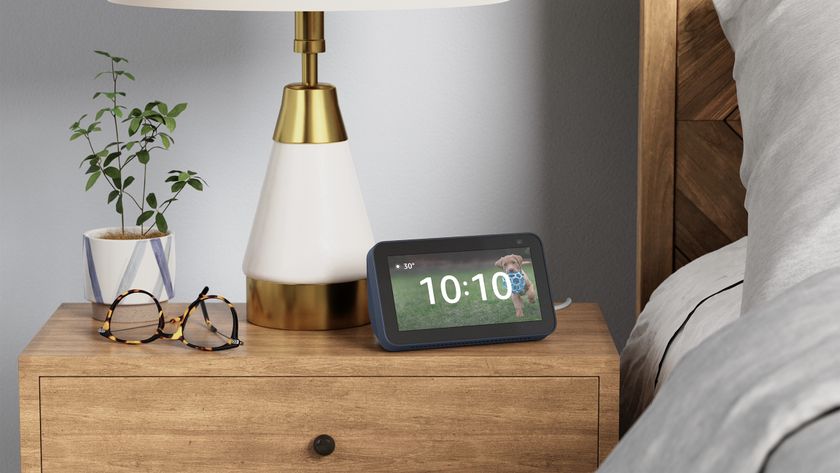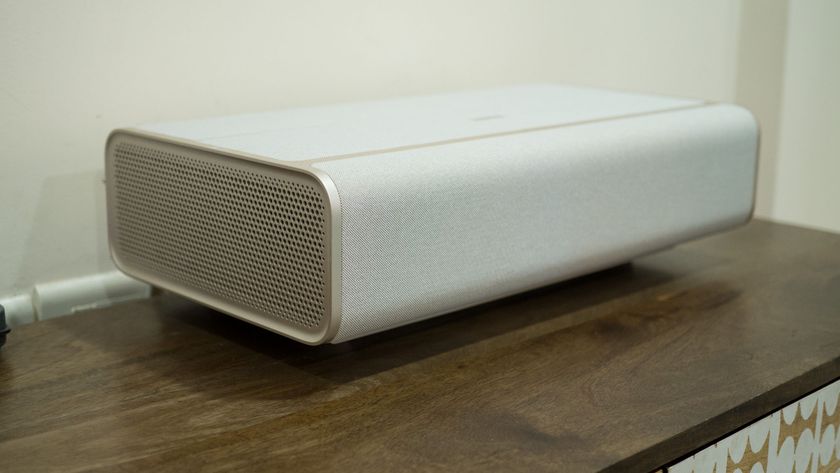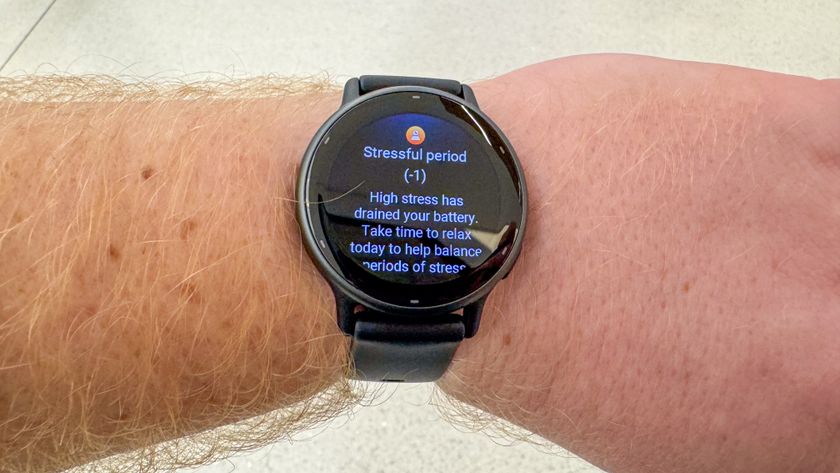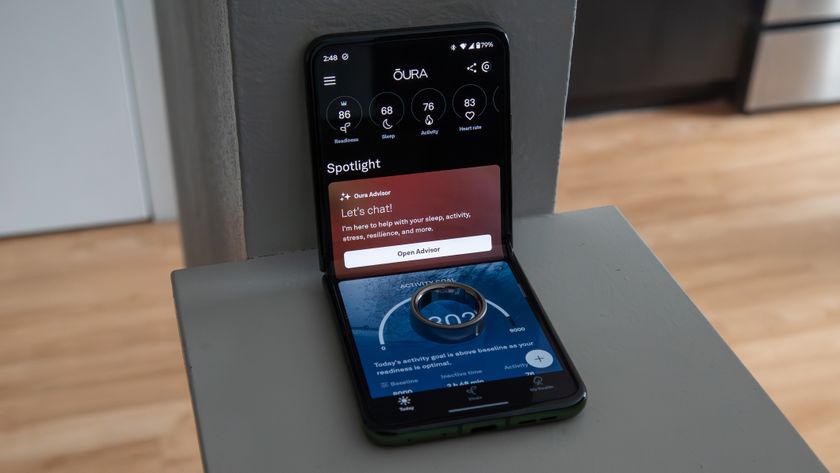Amplifi HD Home Wi-Fi system review: Your next Wi-Fi router
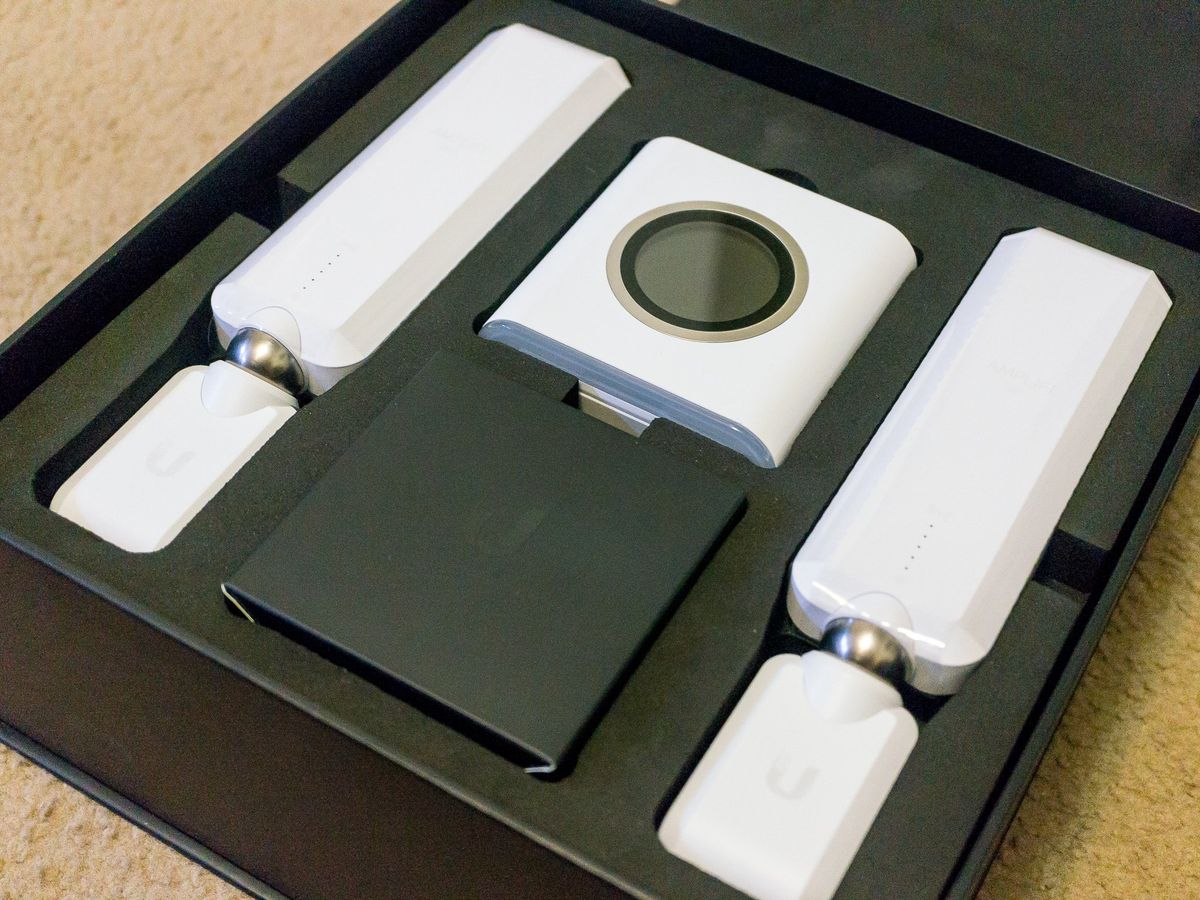
Mesh networking isn't exactly a new thing. But an affordable way to get started, and a setup routine that doesn't need a network engineer to make everything work is new. Even Google is taking part of a recent consumer push for fast and easy mesh networking in your house with Google Wifi. Everyone needs fast internet for things like streaming movies or playing online games, and for some homes, a single router solution won't cut it. That's where mesh networking comes in.
Not everyone needs a mesh network in their house. Most people live in a home with a footprint that most any good hi-end Wi-Fi router can cover. But wireless networks are affected by more than just distance; dense walls, metal framing or conduit and HVAC duct work can wreck an otherwise strong wireless signal. If you have dead spots in your house or even places where the network is just too slow, you need to extend your signal somehow.
Until recently, that meant a range extender that uses its own access point. They were easy to setup, but you needed to know which network to connect to and you lose bandwidth when using one. Now, a product like the Amplifi HD system can give you all the speed you need and the bandwidth for things like streaming or uploading big files with no extra network to configure and a simple setup process.
Router vs Mesh Networking: What's best for your home Wi-Fi network?
Design and features
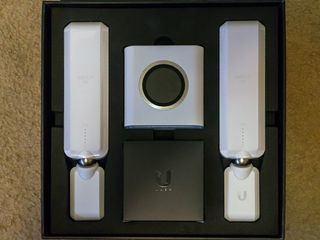
We're reviewing the Amplifi HD system. Ubiquiti — a name well known for commercial and enterprise grade networking equipment — also makes a 2x2 (the HD is a 4x4) system and a long-range system. Each has their strengths and weaknesses, but we want to make sure everyone is clear on which product we're talking about.
The Amplifi HD is designed for large houses (small businesses can benefit as well) that have those kinds of walls and floors — glass, metal, and fiber insulation are all big culprits here — that make using a single router solution impractical. It uses six high-density (thus the HD) long-range 802.11AC 3x3 MIMO antennas to bring throughput speeds up to 5.25Gbps in a coverage area of 20,000 square feet. The software offers WPA2-PSK AES/TKIP Wi-Fi encryption and you have five Gigabit Ethernet Ports (1 WAN and 4 LAN) on the back. Setup and administration are done through the web browser or by using the excellent Amplifi app (download from Google Play).
The Amplifi HD base station looks good and is nice and small, but the mesh node points are neither.
The design itself doesn't have to be hidden away so as not to look out of place in your living room (or anywhere). The base station is a cube about 4-inches in size (3.9 x 3.8 x 3.9) with a soft-touch white finish. The base has an LED ring to flash for feedback during setup or when using the app to identify itself and the front of the cube has a circular full color LCD touch screen (about 1.5-inches in diameter) that gives you information at a glance for things like current speeds, IP addresses, connected devices, total bandwidth and the time, day and date. There's also a USB 2.0 port on the back of the base station, but as of right now it can't be used to connect storage or a printer. All in all, it's pretty snazzy as far as networking appliances go.
Be an expert in 5 minutes
Get the latest news from Android Central, your trusted companion in the world of Android
The mesh points, on the other hand, are large. They are made of two parts — a base that plugs directly into a grounded wall outlet and a 6.5 x 2.5 x 1-inch antenna that attaches magnetically. The attachment point uses a ball and socket joint so you can swivel the antenna for the best reception. On the front of the mesh point, you'll find five blue LEDs to indicate the strength of the signal back to the base station. They are easy to install — just plug them in — and we'll see later down the page that they work as advertised, but they are 9 inches of white plastic plugged into the wall. While I like seeing the soothing five LEDs of network goodness plugged in next to the coffee maker when I sit and eat my breakfast, my wife doesn't and she feels they can get in the way if used in a high-traffic area of your house. Like the plug behind the kitchen counter. Do like I eventually did and move it into the hallway, or rest it behind something.
Inside the box, you'll find the base station, two mesh points, an ethernet cable, a power supply and a user manual. This is everything you need to get the Amplifi HD set up and running.
The setup process and admin features
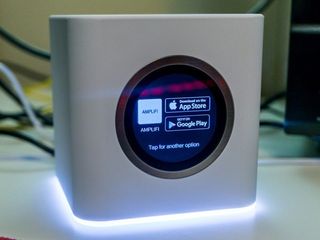
Everything here is easy. A consumer product needs to be easy. Some of us are comfortable calculating subnets and programming an IPchain firewall, but most people want (and need) easy to follow instructions to get started and running in a way that does everything they need. The folks who designed the Amplifi HD nailed that.
The hardware setup is the same as every other router — connect your modem to the WAN port with an ethernet cable, then power everything back on. Remember, in this case, everything means the base station, your modem and any mesh points you want to use. You can then open a web browser and automatically be directed to an information page about the setup (imagine what you see at a hotel when you use the in-room Wi-Fi) but the easiest and recommended way to get started is with the Amplifi app.
You can set up the Amplifi system in just a few minutes. So could your mom.
Sit down in front of the base station and open the app after you have everything powered up. The app directs your phone to connect to a direct connection with the Amplifi base station, and after tapping a couple buttons when prompted and typing in your network name and password you're done. Literally, done. Go watch Netflix in the back bedroom now.
I found the smart band steering — software that automatically connects you to the best channel based on your location and overall load — to do an excellent job. If all you need to do is get a good Wi-Fi signal everywhere in your house, the Amplifi HD is 100% plug-and-play. But if you need to do a little more, the setting cover the things that most "advanced" users need, too.
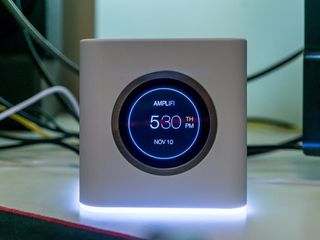
When you open the Amplifi app, you see the overview. The base station and any mesh nodes connected are displayed along with their current status. You'll also find the number of connected clients and upload and download speeds displayed. Quick shortcuts for performance monitoring, guest network settings, network management and diagnosis are across the bottom. Tapping on the base station opens the settings where you can tweak things exactly how you need them.
Besides actual hardware features like display brightness and enabling or disabling system sound — there's even a programmable night mode for the front display — you'll find most of the settings you would with a traditional router geared towards the hobbyist. (Yes, some of us do geek out over network gear.)
- Band segregation allows you to use the two radios (2.4 and 5GHz) independently, each with their own SSID.
- Port forwarding. It works and my FTP server didn't skip a beat.
- MAC Address Cloning.
- Full DHCP server settings.
- Encryption settings.
- Guest network settings, including lease times.
- SSID visibility settings.
- Router steering to force connections to the base station instead of a mesh node.
- Channel selection and width if you choose to not use the built-in band steering.
The only "important" features I didn't see are QoS settings and per website parental controls (you can block WAN access on a per-device basis or throw a kill switch to disconnect all connected devices). Of course, the Amplifi app also allows you to check your network speeds and check all of your network settings for the base station, mesh nodes, and connected devices.
This is a bigger deal than you might think. Finding a consumer kit that gives you this sort of control over your network is difficult when you move past a traditional router, and the Amplifi HD's direct competition doesn't offer most of these features. Easy can be robust and adjustable, after all.
Performance
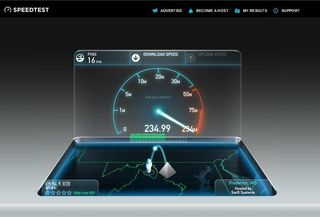
When you sell a product designed to bring "good internet" everywhere in your home, how it performs is the most important thing. I'm happy to say the Amplifi HD offers the excellent performance it promises.
Multiple nerds and extension cords testing mesh networking equipment is exactly what you imagine it would be.
The first test I did with the Amplifi HD was for distance. This particular kit wasn't designed for long-distance networking, but my completely unscientific testing left me more than satisfied. With the base station set up in my office, one mesh node was plugged into an outdoor receptacle on my house. The second node was plugged into an outlet in a shed on the edge of my property, and the third was plugged into my neighbor's house on one of his outside receptacles.
The total distance between the base station and the second mesh node was about 60 yards (55 meters). Network speed and bandwidth were about 50% of what was seen in the same room as the base station. The connection was more than sufficient to stream a 1080p movie from Google Play Movies to my Chromebook. Further testing showed an acceptable connection (approximately 20% of the speed and bandwidth seen at the base station) for email or web browsing at 85 yards (78 meters). I'll admit I expected to see a signal at these distances but did not expect to see a signal this strong and wide.
The second test measured network throughput in a more sensible way. The Amplifi base station was set up to separate the 5GHz band so it could be tested against the Google OnHub from ASUS. Two laptops were both connected through an 802.11ac Wi-Fi interface and I used iPerf to measure the speed between the two through the Amplifi HD setup. The network was set to force all connections to the base station. At close proximity (three to ten feet) the Amplifi router delivered an average of 454 Mbps compared to the OnHub's 461Mbps. At 30 feet, the Amplifi downloaded at 209Mbps on average, while the OnHub turned in an average of 212Mbps. At 30 feet on a different floor, the Amplifi scored 106 Mbps and the OnHub was at 98 Mbps. Everything was very close. Then I went to the settings and allowed connections through the entire mesh (the mesh nodes is upstairs at my house while the base in downstairs in my office) and repeated the last test. The OnHub against was around 100 Mbps but the Amplifi HD mesh network speeds went back up to 203Mbps on average. As we moved further away from the initial AP — and had more walls between it and the phone I was using to test — the trend continued until the OnHub lost signal completely. At that point, I was able to download a single large file at 31Mbps and a set of small (1Mb) files at 15Mbps. I was in my car and out in the street at this time.
Benchmarking a wireless mesh network was fun, but real-world testing was enlightening.
These sorts of tests mean something to people who like to fiddle around with network gear. They're like a benchmark app running on your phone in that way. Cool numbers that really don't tell us a lot. Real world results are more important. I've been using it here at home for about 10 days — enough time to run almost 90GB through it. And even in my modest-sized house, I see a clear difference compared to my previous OnHub router.
With the base station in my office and the mesh nodes upstairs (one in the living room and one in the bedroom), I no longer have to use the wired connection to watch HD movies through my Shield TV (especially when using it as a cast target). Google OnHub gave me what was needed to play PS4 games and even download big games from Steam on my SteamBox (Free new Skyrim FTW. In Gaben we trust), but 1080p movies would buffer and pixellate often enough that my wife and I purchased a second switch (the OnHub router has only one LAN port) to connect to the primary switch in my office so we could use the wired connection.
The speed was there but not the bandwidth, and this certainly isn't an ideal configuration unless you have expensive enterprise switches. Now I just let everything connect to the mesh node plugged into the wall 6 feet away and it all works the way we want it to work. I even have a strong enough network on the back porch, where I like to work and play when the weather permits, to stream a movie or do a podcast. Under real-world conditions, I see a measurable improvement through the floors and walls in my house.
Should you buy this thing?
Ask yourself two questions: Are there places in my house that need better Wi-Fi signal, and will the network controls offered in the Amplifi app suit all my needs? If you said yes and yes, then heck yeah you should buy it.
It's the most robust (in terms of bandwidth and speeds) home networking equipment I've had the pleasure of testing. The mesh nodes are able to amplify the signal without the 50% to 70% signal loss we see from an AP based extender system and that means a smart TV or HTPC can have the network it needs even if it's back in the corner of your house. The router itself delivers exceptional performance while connected to a typical cable modem (I was testing with a Surfboard DOCSIS 3.0 modem using Comcast business-class internet) and provides an initial signal as strong as any high-end router we've tested. Most importantly, you can get this type of performance everywhere in a typical house in a package designed for simple setup — the Amplifi HD system just works.
I would feel good recommending this product to anyone. In fact, I hope the Google Wifi system is this easy and works this well. It has some very big shoes to fill.

Jerry is an amateur woodworker and struggling shade tree mechanic. There's nothing he can't take apart, but many things he can't reassemble. You'll find him writing and speaking his loud opinion on Android Central and occasionally on Threads.
